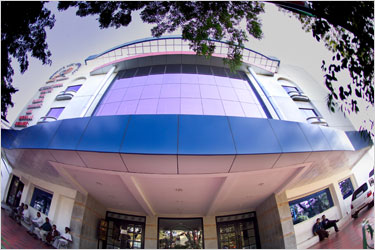Authors:
Dr. Soma Guhathakurtha, Dr Surpreet Chopra, Dr. K. M. Cherian.
Introduction:
Suddenly, stem cells are everywhere. Once confined to the depths of esoteric health journals, these microscopic clusters have made their way to the nation’s front pages. Recent studies suggest these cells may hold the secret to treatment – even cures – for some of our most baffling diseases, including end stage heart failure – Alzheimer’s, Parkinson’s.
So what are stem cells?
Dr. Marc Hendrich of UCLA School of Medicine describes them as, “Stem cells are like babies who, when they grow up can enter a variety of professions. The baby might become a doctor, a plumber or a fireman depending on influences of life or environment.” This is what makes stem cells so precious, their ability to differentiate in to different types of cells, for example a single haematopoetic stem cell can give rise to red blood cells, different types of immune cells such as lymphocytes and macrophages which help the body fight infection and a lot more.
Stem cells are those primer immature cells that have the potential to differentiate in top just about any kind of cell. The cells may also be able to replace damaged or sick cells in a patient with an injury or degenerative disease. Research indicates that stem cells injected in to dead or dying tissue can regenerate, improve function and repair the damaged tissue
Stem cell research and treatment at Frontier Lifeline:
We at Frontier Lifeline Hospital have established from animal experiments with stem cells from peripheral blood (Peripheral Blood Stem Cells) and from the bone marrow have an enormous capability to regenerate lost, degenerated scarred heart tissues. We earlier developed stem cells from peripheral blood, but because of it being too cumbersome, we now obtain the stem cells from bone marrow and assess them for their viability through a battery of tests. We at our wet lab are also developing new techniques to gather, and activate such cells for therapies to treat heart diseases.
During the past three years, 56 patients with end stage heart failure who were not responding to any kind of disease whether Maximal Medical Therapy, Angioplasty, Ventricular Remodeling, Coronary Artery Bypass, CRT devices etc. The only way they could be salvaged was with a heart transplant, but the need for transplantable heart far outweighs the availability supply. Stem cells may offer the possibility of a renewable source of replacement cells, tissues acting as a scaffold for remodeling of the heart and improving heart function
We tried stem cells in these patients with their due consents and approvals sought from institutional and ethical committees of clinical research, all preoperative evaluation was done, the baseline cardiac parameters were established and repeated 3, 6 and 12 months after the stem cell injections. Bone marrow aspirated through the iliac crest bone, later processed and stem cells separated. The concentrate of stem cells was the diluted in different compositions to allow various routes of administration whether through the coronary arteries or injection into the myocardium.
Today after 3 years, our results are phenomenal and most of our patients have observed that they are able to perform daily routine, without any symptoms of angina, breathlessness, and have even reduced the medications once required at maximal doses. Most of the patients who had dilated hearts have shown a significant reduction in the heart size, and an improvement in the ejection fraction by Thallium PET Scans, which is a measure of the function of heart.
Scientists believe that adult stem cells (whether derived from peripheral blood, bone marrow etc), and tissues derived from them, are currently believed less likely to initiate rejection after transplantation. This is because a patient’s own cells could be expanded in culture, coaxed into assuming a specific cell type (differentiation), and then reintroduced into the patient. The use of adult stem cells and tissues derived from the patient’s own adult stem cells would mean that the cells are less likely to be rejected by the immune system. This was the reason that none of our patients complained of any adverse reaction after the injections.
The whole procedure can be finished in 2 – 3 days of hospital stay.
Case Study:
Dr K. M. Cherian’s Frontier Lifeline Hospital, made medical history in November 2006
Four-month-old Aarohi underwent corrective surgery for a rare cardiac disease called ALCAPA with severe LV dysfunction and failure. Since the child’s heart was severely damaged, the doctors decided to improve the cardiac function by injecting stem cells into the heart. In Aarohi’s case, since she was just about 4.5 kg and could not offer her own stem cell resource, the cells were harvested after matching her father’s blood. It was the first time that a child weighing less than 5 kg and was less than 6 months old had undergone a complicated cardiac surgery—it was also an extremely rare case of stem cells being taken from outside the patient.
Arohi, Less than 6 Months old, after undergoing corrective surgery
Arohi, today (5 years old) – Hale and healthy







